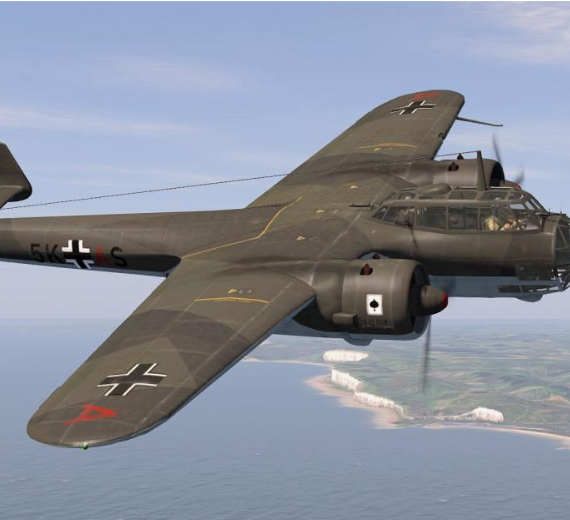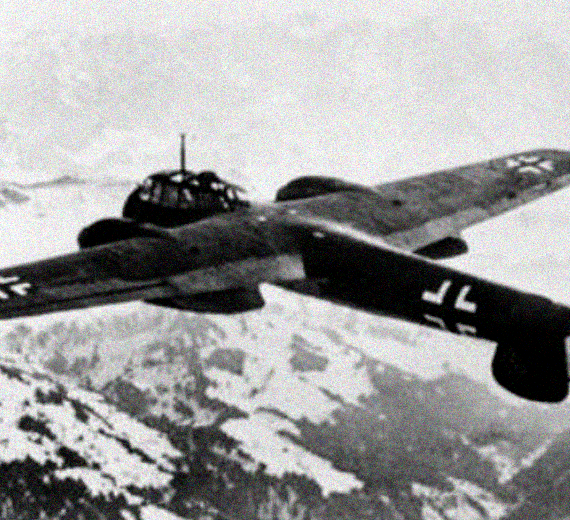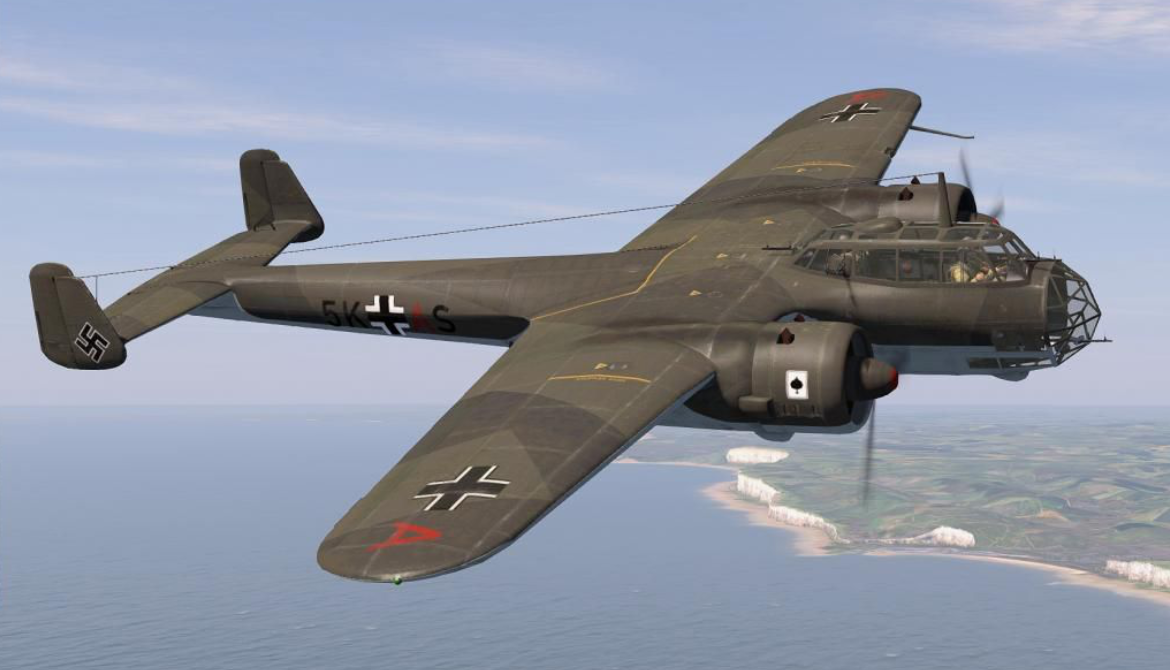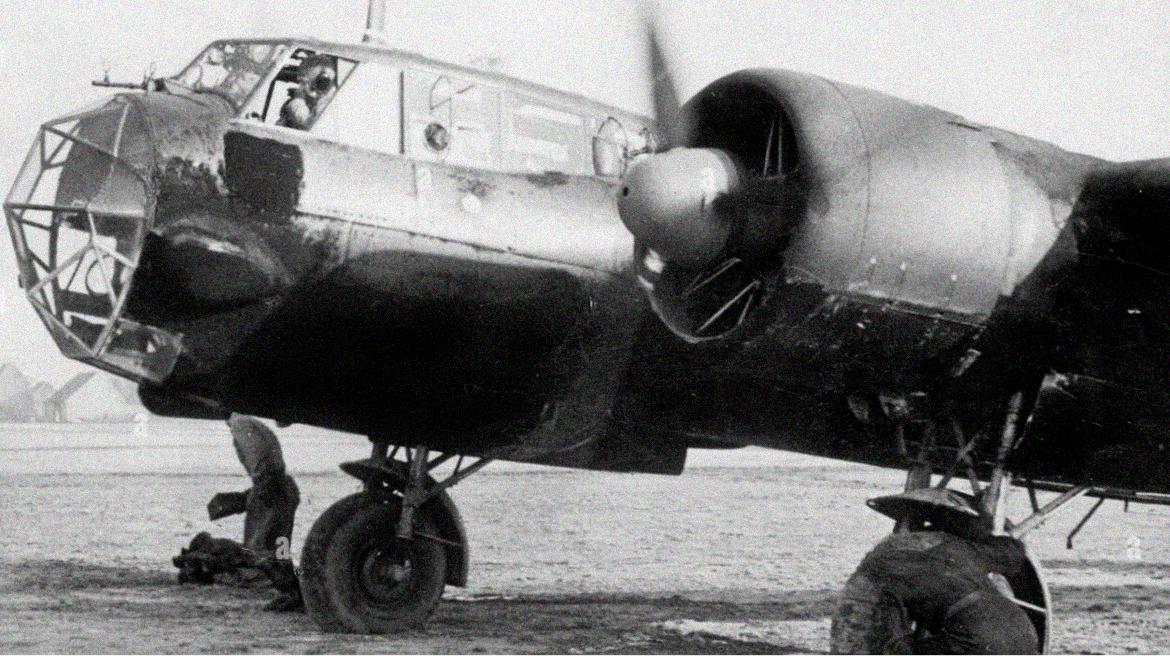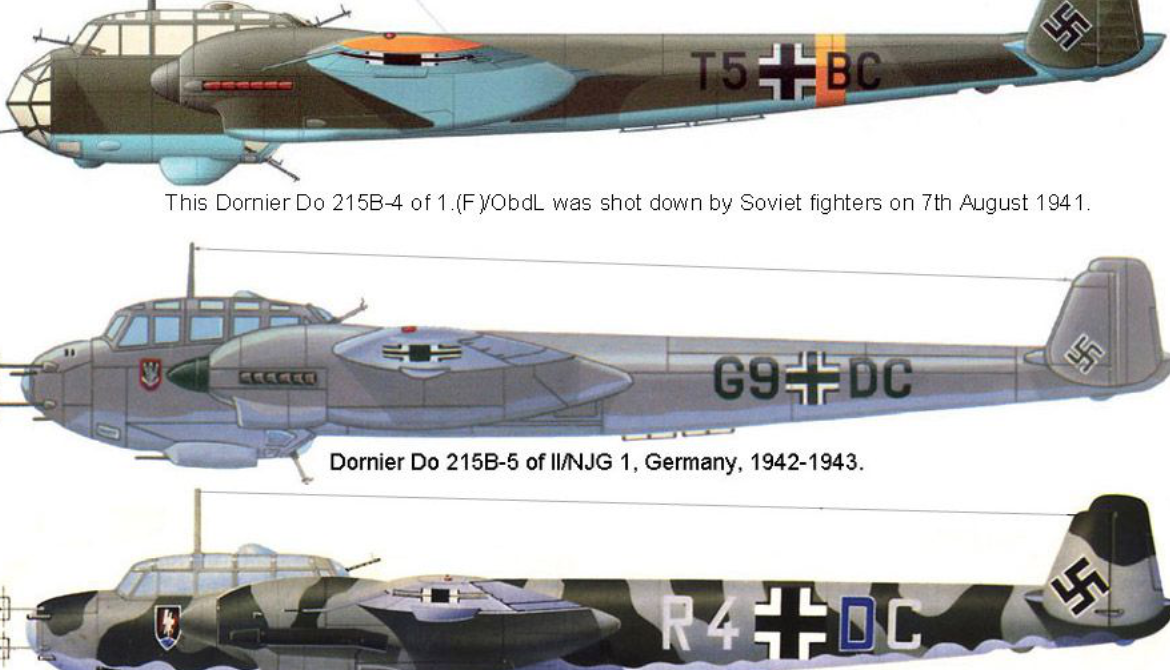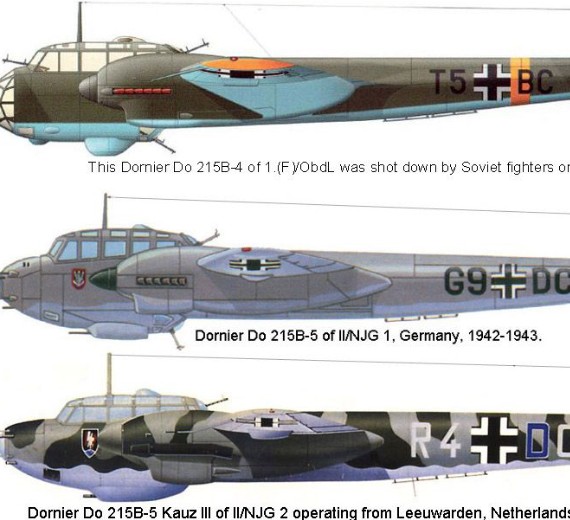Dornier Do-17
Fliegender Bleistift
Role Light bomber, night fighter and
reconnaissance aircraft
Manufacturer Dornier Flugzeugwerke
First flight 23 November 1934
Introduction 1937
Retired 15 September 1952 (Finnish Air Force)
Primary users Luftwaffe
Royal Yugoslav Air Force
Finnish Air Force
Spanish Air Force
Number built 2,139
Variants Dornier Do 215
.
History Dornier Flugzeugwerke.
Dornier Do-17 Fliegender Bleistift

The Dornier Do 17 is a twin-engined light bomber produced by Dornier Flugzeugwerke for the German Luftwaffe during World War II. Designed in the early 1930s as a Schnellbomber ("fast bomber") intended to be fast enough to outrun opposing aircraft, the lightly built craft had a twin tail and "shoulder wing". Sometimes referred to as the Fliegender Bleistift ("flying pencil"), it was popular among its crews due to its handling, especially at low altitude, which made the Do 17 harder to hit than other German bombers.
The Do 17 made its combat debut in 1937 during the Spanish Civil War, operating in the Condor Legion in various roles. Along with the Heinkel He 111 it was the main bomber type of the German air arm in 1939–1940. The Dornier was used throughout the early war, and saw action in significant numbers in every major campaign theatre as a front line aircraft until the end of 1941, when its effectiveness and usage was curtailed as its bomb load and range were limited.
Production of the Dornier ended in mid-1940, in favour of the newer and more powerful Junkers Ju 88. The successor of the Do 17 was the much more powerful Dornier Do 217, which started to appear in strength in 1942. Some remaining Do 17s continued in various Luftwaffe roles until the end of the war, as a glider tug, research, and trainer aircraft. A considerable number were sent to other Axis nations, with few surviving the war. The last was scrapped in Finland..
Design
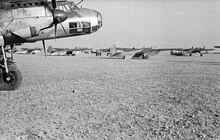
Forward section of a 328 The forward fuselage had a conventional stepped cockpit, with a fully glazed nose. Early variants were labelled the "flying pencil" owing to its sleek and continuous "stick-like" lines. As a result of the lessons learned in the Spanish Civil War, the cockpit roof was raised and the lower, or bottom half, of the crew compartment was a typical under-nose gondola or "Bodenlafette" (abbreviated Bola): this inverted-casemate design ventral defensive armament position was a common feature of most German medium bombers. The Bola was extended back to the leading edge of the wings where the lower-rear gunners position and upper-rear gunner position were level with each other. As with contemporary German bombers, the crew were concentrated in a single compartment.
The cockpit layout consisted of the pilot seat and front gunner in the forward part of the cockpit. The pilot sat on the left side, close up to the Plexiglas windshield. One of the gunners sat on the right seat, which was set further back to provide room for the 7.92 mm (0.312 in) MG 15 machine gun to be traversed in use. The Do 17 usually carried a crew of four: the pilot, a bombardier and two gunners. The bomb-aimer also manned the MG 15 in the nose glazing and Bola-housed rear lower position. The two gunners operated the forward-firing MG 15 installed in the front windshield, the two MGs located in the side windows (one each side) and the rearward firing weapon. The cockpit offered a bright and panoramic view at high altitude. The standard ammunition load was 3,300 rounds of 7.92 mm ammunition in 44 double-drum magazines.

The Do 17 carried a single pilot; to his right sat one of two dedicated gunners
0
KmCeiling
0
KmCombat RANGE
0
Km/hAircraft Speed
0
Max Crew
Photo Gallery
Dornier Flugzeugwerke
Dornier Do-17 Fliegender Bleistift


Dornier Flugzeugwerke
Dornier Do-17 Fliegender Bleistift
General Info
-
-
- Crew: 4
- Length: 15.8 m (51 ft 10 in)
- Wingspan: 18 m (59 ft 1 in)
- Height: 4.56 m (15 ft 0 in)
- Empty weight: 5,210 kg (11,486 lb)
- Empty equipped: 5,888 to 5,963 kg (12,981 to 13,146 lb)
-
Powerplant
-
- Max takeoff weight: 8,837 kg
- Fuel capacity: standard fuel 1,540 L with aux tank in forward
- Powerplant: 2 × Bramo 323P 9-cyl. air-cooled radial piston engines with 1,000 PS (986 hp, for take-off
- Propellers: 3-bladed variable-pitch propellers
-
Performance
- Maximum speed: 350 km/h (220 mph, at 8,040 kg (17,725 lb) at sea level
-
-
-
-
-
- 410 km/h (255 mph) at 8,040 kg (17,725 lb) at 5,000 m (16,404 ft)
-
-
-
-
- Combat range: 660 km (410 mi, 360 nmi) with 1,540 L (339 imp gal) fuel and 1,000 kg (2,205 lb) of bombs
-
-
-
-
-
- 1,010 km (628 mi) with 2,435 L (536 imp gal) fuel and 500 kg (1,102 lb) of bombs
-
-
-
-
- Service ceiling: 8,200 m (26,900 ft)
Armament
-
- Guns: 6 × 7.92 mm (0.312 in) MG 15 machine guns in front upper/lower, rear upper/lower and beam positions (all firing from cockpit area)
- Bombs: 1,000 kg (2,205 lb) of bombs carried internally, either 20 x 50 kg (110 lb) bombs or 4 x 250 kg (551 lb) bombs
.
Links to Youtube & Others
The initial production variants were the Do 17E-1 bomber, which was tested with two Daimler-Benz DB 600, and Do 17F-1 reconnaissance aircraft, powered like the early prototypes with BMW VI engines, which entered production in late 1936.
Dornier Do-17 Flying Pencil
Despite its success, owing to shortages in the supply of the Daimler-Benz engine, the production Do 17M was fitted with the Bramo 323 engine.
Youtube Link
The Dornier Do 17Z series was the most recognised and mass-produced variant, and saw more combat service than the E-U types
